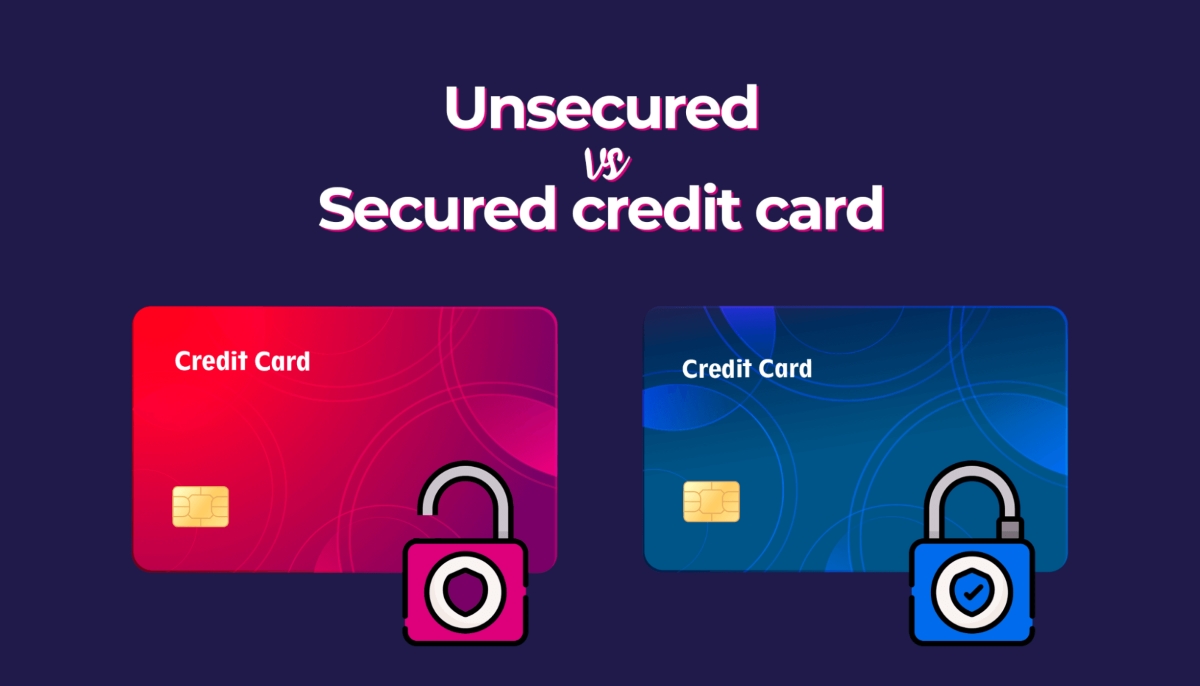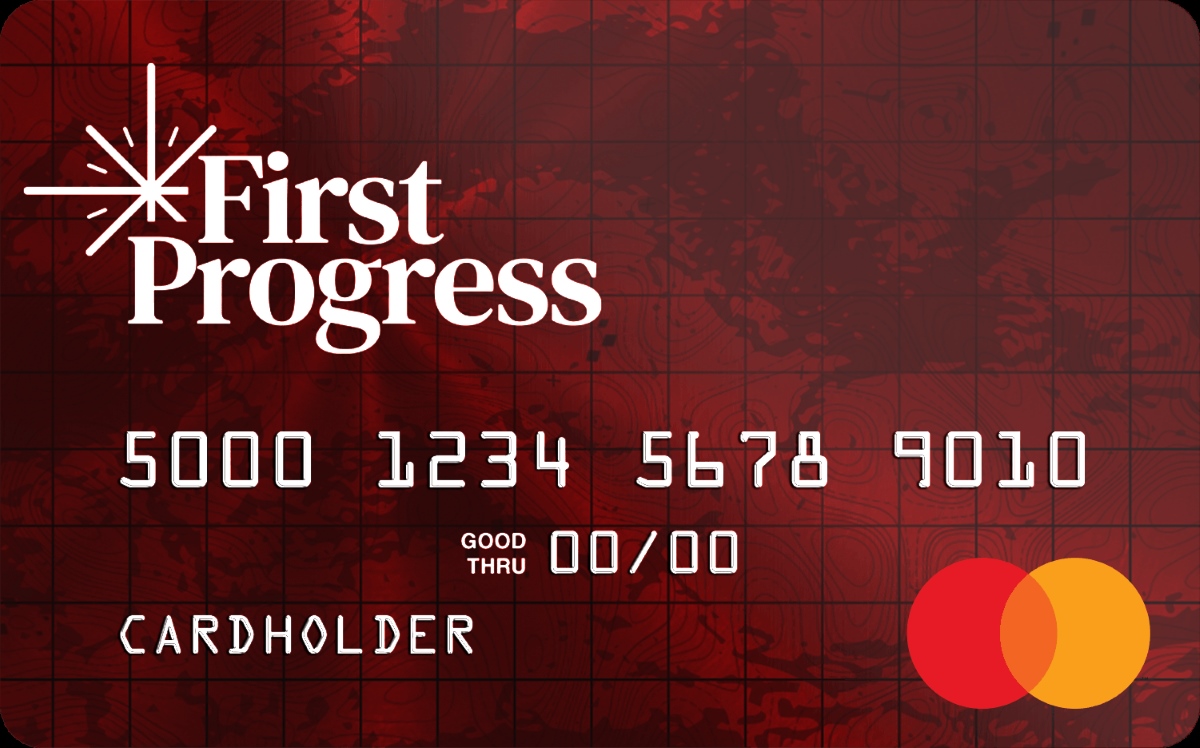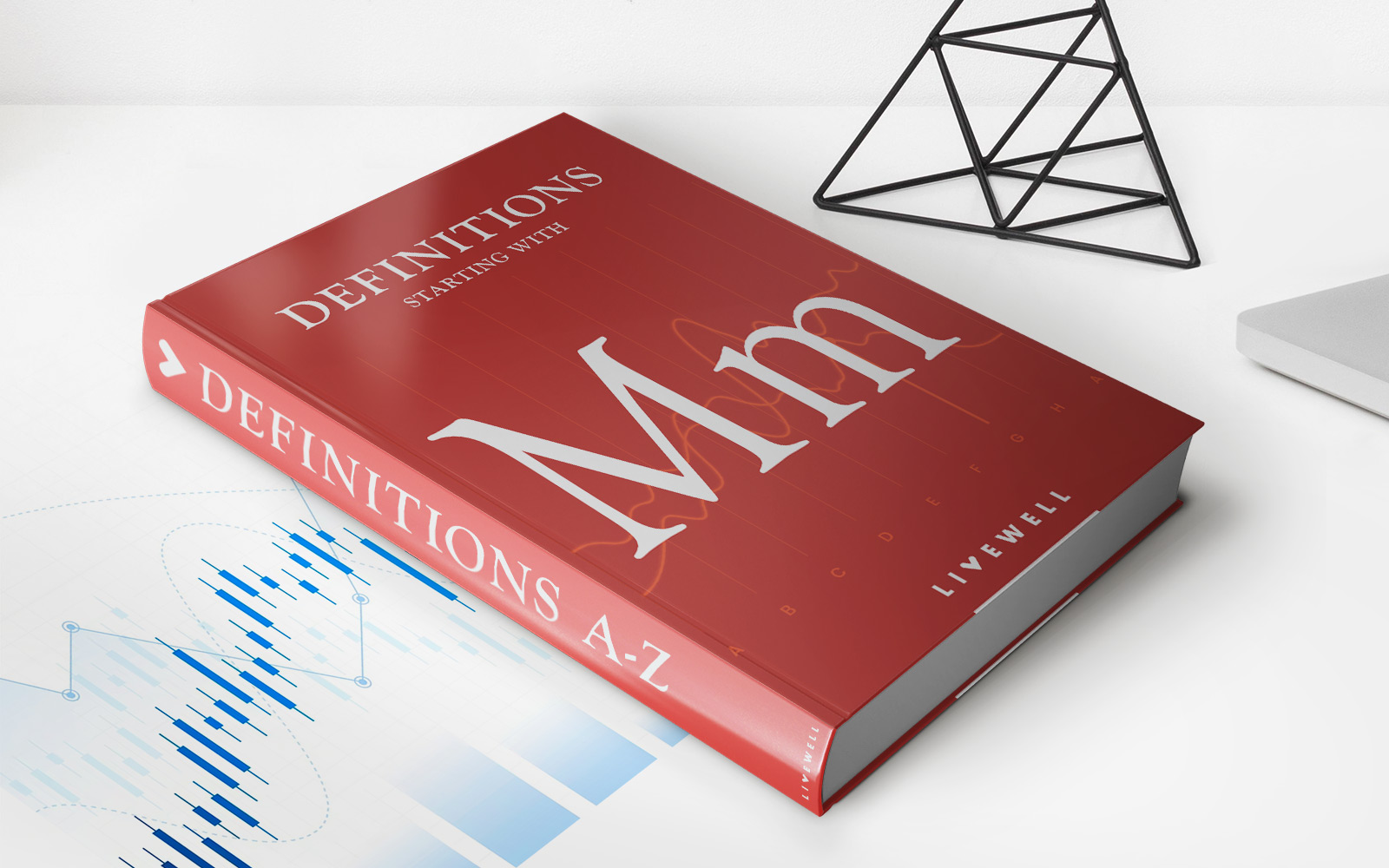Home>Finance>What Is The Difference Between A Secured Credit Card And An Unsecured Credit Card


Finance
What Is The Difference Between A Secured Credit Card And An Unsecured Credit Card
Modified: March 1, 2024
Learn about the key distinctions between secured credit cards and unsecured credit cards in the world of finance. Make an informed decision to manage your credit wisely.
(Many of the links in this article redirect to a specific reviewed product. Your purchase of these products through affiliate links helps to generate commission for LiveWell, at no extra cost. Learn more)
Table of Contents
Introduction
When it comes to managing finances and building credit, credit cards play a significant role. They provide convenience, purchasing power, and the opportunity to establish a credit history. However, not all credit cards are created equal. There are two main types of credit cards: secured credit cards and unsecured credit cards. Understanding the differences between these two types can help individuals make informed decisions based on their financial needs and goals.
A secured credit card is a type of credit card that requires a cash deposit as collateral. This cash deposit serves as a form of security for the credit card issuer, reducing the risk of default. The credit limit on a secured credit card is typically equal to the amount of the cash deposit, providing a sense of security for the lender.
On the other hand, an unsecured credit card does not require any collateral. It is the most common type of credit card that most people are familiar with. The credit limit on an unsecured credit card is determined by the creditworthiness of the applicant, based on factors such as income, credit history, and credit score.
Now that we have a basic understanding of what secured and unsecured credit cards are, let’s explore the key differences between the two and how they can impact your financial journey.
Definition of a Secured Credit Card
A secured credit card is a type of credit card that requires a cash deposit as collateral. This cash deposit serves as a form of security for the credit card issuer, reducing the risk of default. The credit limit on a secured credit card is typically equal to the amount of the cash deposit, providing a sense of security for the lender.
Secured credit cards are designed for individuals who may have a limited or poor credit history, or those who are looking to rebuild their credit. By providing a cash deposit, individuals with low credit scores or no credit history can still have access to a credit card and the opportunity to establish or improve their creditworthiness.
When you apply for a secured credit card, the credit card issuer will hold your cash deposit as collateral. In the event that you are unable to make your credit card payments, the issuer can use the cash deposit to cover the outstanding balance. This reduces the risk for the issuer and allows them to offer a credit card to individuals who may not qualify for an unsecured credit card.
It’s important to note that the cash deposit for a secured credit card is usually held in a separate account and does not earn interest. However, some credit card issuers may offer the opportunity to upgrade to an unsecured credit card after a certain period of responsible card usage and timely payments. This allows individuals to graduate from a secured credit card to an unsecured credit card, giving them access to higher credit limits and potentially better terms and benefits.
Definition of an Unsecured Credit Card
An unsecured credit card is the most common type of credit card that does not require any collateral. Unlike a secured credit card, an unsecured credit card is issued based on the creditworthiness of the applicant. Factors such as income, credit history, and credit score are taken into consideration by the credit card issuer.
With an unsecured credit card, there is no need to provide a cash deposit as security. The credit limit on an unsecured credit card is determined by the credit card issuer and is typically based on the applicant’s ability to repay the borrowed funds. This credit limit represents the maximum amount that can be charged to the credit card.
Unsecured credit cards are often preferred by individuals who have an established credit history and a good credit score. These cards offer greater flexibility and convenience when it comes to making purchases, as there is no need to tie up funds in a separate account as collateral.
One advantage of unsecured credit cards is the potential for higher credit limits. As individuals demonstrate responsible credit card usage and make timely payments, the credit card issuer may increase the credit limit over time. This can provide greater purchasing power and more options for managing finances.
It’s important to note that because there is no collateral to secure the credit card, lenders take on more risk with unsecured credit cards. To mitigate this risk, credit card issuers may charge higher interest rates and fees compared to secured credit cards. This is why maintaining good credit and making payments on time is crucial to avoid incurring unnecessary interest charges and fees.
Overall, unsecured credit cards offer individuals the opportunity to access credit without the need for collateral. However, it’s important to use them responsibly and within your means to avoid accumulating debt and damaging your credit score.
Key Differences between Secured and Unsecured Credit Cards
While both secured and unsecured credit cards provide access to credit, there are several key differences between the two. Understanding these differences can help individuals choose the right type of credit card based on their financial circumstances and goals. Let’s explore some of the main distinctions:
- Credit Limit: The credit limit on a secured credit card is typically equal to the amount of the cash deposit provided as collateral. In contrast, the credit limit on an unsecured credit card is determined by the creditworthiness of the applicant.
- Collateral Requirement: Secured credit cards require a cash deposit as collateral, while unsecured credit cards do not require any collateral.
- Credit Qualification: Secured credit cards are generally easier to obtain, as they are designed for individuals with limited or poor credit history. On the other hand, unsecured credit cards typically require a higher credit score and a more established credit history.
- Building Credit: Both secured and unsecured credit cards can help individuals build or rebuild their credit. However, secured credit cards are often recommended for individuals with poor or no credit, as they provide a means to establish a positive credit history through responsible card usage.
- Interest Rates and Fees: Secured credit cards may have lower interest rates and fees compared to unsecured credit cards. This is because the collateral reduces the risk for the credit card issuer. Unsecured credit cards, on the other hand, may have higher interest rates and fees due to the increased risk for the issuer.
It’s important to note that while secured credit cards require a cash deposit, this deposit is not used to make payments toward the credit card balance. The deposit is held as collateral and is typically returned to the cardholder when they close the account or upgrade to an unsecured credit card.
When deciding between a secured and unsecured credit card, individuals should consider their current credit situation, financial goals, and ability to provide a cash deposit. It may be beneficial to speak with a financial advisor or credit counselor to determine which type of credit card is most suitable for their needs.
Ultimately, the key differences between secured and unsecured credit cards lie in the credit limit, collateral requirement, credit qualification, credit-building potential, and the interest rates and fees associated with each card. By understanding these differences, individuals can make informed decisions and choose the credit card that aligns with their financial objectives.
Credit Limits
One of the key differences between secured and unsecured credit cards is the way credit limits are determined. The credit limit refers to the maximum amount of credit that can be charged to a credit card. Here’s how credit limits are set for each type of card:
- Secured Credit Card: The credit limit on a secured credit card is typically equal to the amount of the cash deposit provided as collateral. For example, if you make a $500 cash deposit, your credit limit will be $500. The credit limit on a secured credit card can vary depending on the credit card issuer, but it is usually in line with the deposited amount. This ensures that the credit card is secured by the collateral.
- Unsecured Credit Card: The credit limit on an unsecured credit card is determined by the credit card issuer. It is based on several factors, including the applicant’s creditworthiness, income, credit history, and credit score. If you have a good credit history and a higher income, you may be eligible for a higher credit limit. However, if you have a limited credit history or a low credit score, your credit limit may be lower.
Having a higher credit limit can provide greater purchasing power and flexibility, allowing you to make larger purchases or handle unexpected expenses. It is important to note that while a higher credit limit can be advantageous, it is crucial to use credit responsibly and avoid overspending or carrying high balances, as this can negatively impact your credit score and financial well-being.
With secured credit cards, the credit limit is directly tied to the cash deposit. This means that the amount you can spend on the card is limited to the amount you have deposited. On the other hand, unsecured credit cards provide a credit limit based on your creditworthiness and the issuer’s assessment of your ability to repay the borrowed funds.
To increase your credit limit on either type of credit card, you can make timely payments, demonstrate responsible credit card usage, and build a positive credit history. Some credit card issuers may periodically review your account and increase the credit limit if they see that you have been using the card responsibly.
It’s important to note that the credit limit on a credit card is not a reflection of your financial worth or income. It is calculated based on the risk assessment made by the credit card issuer, taking into account various factors. It is essential to manage your credit card usage wisely and avoid exceeding your credit limit to maintain a healthy credit profile.
In summary, secured credit cards have credit limits equal to the cash deposit provided as collateral, while unsecured credit cards have credit limits determined by the credit card issuer based on the applicant’s creditworthiness. Understanding the credit limits of both types of credit cards can help you make informed decisions and use credit responsibly to manage your finances effectively.
Collateral Requirement
One of the key differences between secured and unsecured credit cards is the requirement for collateral. Let’s explore the concept of collateral and how it applies to each type of credit card:
Secured Credit Card: A secured credit card requires collateral in the form of a cash deposit. When you apply for a secured credit card, you are typically required to provide a cash deposit that acts as security for the credit card issuer. This cash deposit is held in a separate account and serves as collateral in case you default on your credit card payments. The credit limit on a secured credit card is usually equal to or a percentage of the cash deposit. While the cash deposit is held as collateral, it is important to note that it does not go towards making payments on the credit card balance and is separate from your credit card charges.
Unsecured Credit Card: In contrast, an unsecured credit card does not require any collateral. It is issued solely based on the creditworthiness of the applicant. The credit card issuer assesses factors such as income, credit history, and credit score to determine the applicant’s creditworthiness and the risk involved in extending credit. Since there is no collateral to secure the credit card, the credit limit on an unsecured credit card is determined by the credit card issuer.
The collateral requirement for a secured credit card provides a level of security for the credit card issuer. It acts as a guarantee that they can recover the outstanding balance in the event that the cardholder defaults on their payments. This reduced risk allows lenders to extend credit to individuals with limited credit history or a low credit score who may not qualify for an unsecured credit card.
It’s important to understand that the cash deposit for a secured credit card is not used to make payments towards the credit card balance unless the cardholder defaults on their payments. The cash deposit is held as a form of security and is typically returned when the account is closed or upgraded to an unsecured credit card, as long as there are no outstanding balances or fees.
On the other hand, unsecured credit cards do not require collateral, which can be advantageous for individuals who do not have the means or desire to tie up funds in a separate account. However, it’s important to note that without collateral, lenders take on more risk with unsecured credit cards. As a result, these cards may have higher interest rates and fees compared to secured credit cards.
In summary, secured credit cards require a cash deposit as collateral, providing a guarantee for the credit card issuer. Unsecured credit cards do not require collateral and rely on the creditworthiness of the applicant. Understanding the collateral requirement of each type of credit card can help individuals make informed decisions based on their financial circumstances and goals.
Credit Qualification
When it comes to credit cards, credit qualification is a significant factor in determining eligibility for different types of cards. Let’s take a closer look at how credit qualification differs between secured and unsecured credit cards:
Secured Credit Card: Secured credit cards are designed for individuals with limited or poor credit history, or those who are looking to rebuild their credit. These cards offer an opportunity to establish or improve creditworthiness. Since secured credit cards require a cash deposit as collateral, credit qualification is generally more lenient compared to unsecured credit cards. It is relatively easier to obtain a secured credit card, even if an individual has a low credit score or no credit history at all. The cash deposit acts as security for the credit card issuer, reducing the risk of default.
Unsecured Credit Card: Unsecured credit cards typically have stricter credit qualification criteria compared to secured credit cards. Lenders evaluate an individual’s creditworthiness based on factors such as income, credit history, and credit score. These factors help lenders assess an applicant’s ability to repay borrowed funds. Individuals with a good credit history, higher income, and a higher credit score are more likely to qualify for an unsecured credit card. They represent a lower risk to the credit card issuer, which is why these applicants are more likely to secure an unsecured credit card.
It’s important to note that credit qualification is not solely determined by credit score. Although a good credit score is often an essential factor, lenders also consider the applicant’s income, debt-to-income ratio, employment history, and other relevant financial information. Each credit card issuer has its own criteria when evaluating credit qualification, and it’s important to review these requirements and consider multiple options before applying for a credit card.
Secured credit cards provide individuals with an opportunity to demonstrate responsible credit card usage and build a positive credit history, even if they have limited or poor credit. By consistently using a secured credit card and making timely payments, individuals can improve their creditworthiness over time, eventually qualifying for unsecured credit cards with better terms and benefits.
On the other hand, unsecured credit cards are typically suited for individuals with an established credit history and a good credit score. These cards offer greater flexibility and convenience but may require more stringent credit qualification standards due to the absence of collateral.
In summary, secured credit cards have more lenient credit qualification criteria, making them accessible to individuals with limited or poor credit history. Unsecured credit cards, on the other hand, require a higher credit score and a more established credit history. Understanding the credit qualification requirements for each type of credit card can help individuals make informed decisions about which card is the most appropriate for their financial circumstances and goals.
Building Credit
Both secured and unsecured credit cards can be valuable tools for building credit. Having a positive credit history is important for various financial endeavors, such as obtaining loans, renting an apartment, or even securing favorable insurance rates. Let’s explore how both types of credit cards can help individuals build credit:
Secured Credit Card: Secured credit cards are often recommended for individuals with limited or poor credit history, as they provide a means to establish or rebuild credit. By using a secured credit card responsibly and making timely payments, individuals can demonstrate their ability to handle credit responsibly and build a positive credit history. It’s important to keep the credit utilization ratio low (the percentage of available credit used) and make payments in full and on time. Over time, responsible usage of a secured credit card can help improve credit scores, making it easier to qualify for unsecured credit cards and other financial products in the future.
Unsecured Credit Card: Unsecured credit cards also play a crucial role in building credit. By using an unsecured credit card responsibly, individuals can demonstrate their creditworthiness and build a positive credit history. Making timely payments, keeping credit utilization low, and avoiding excessive debt are key factors in establishing good credit with an unsecured credit card. Building a solid credit history with an unsecured credit card can result in higher credit scores, which can, in turn, provide access to better credit terms and lending opportunities.
Both types of credit cards contribute to the factors that impact credit scores, such as payment history, credit utilization, length of credit history, and types of credit used. However, it’s important to note that responsible credit card usage alone is not sufficient to build and maintain a strong credit profile. Other factors, such as paying bills on time, managing existing loans, and minimizing debt, also come into play.
Regardless of the type of credit card, building credit requires a disciplined approach to credit management. It’s important to keep balances manageable, avoid maxing out credit limits, and make payments on time. Monitoring credit reports regularly is highly recommended to check for accuracy and address any discrepancies promptly.
In addition to using credit cards responsibly, individuals can also explore other credit-building strategies. This may include becoming an authorized user on someone else’s credit card, taking out a credit-builder loan, or using alternative credit reporting services to report other bills and payments that may not be traditionally included in credit reports.
In summary, both secured and unsecured credit cards offer opportunities to build credit. Secured credit cards are particularly beneficial for individuals with limited or poor credit history, while unsecured credit cards cater to those who already have an established credit profile. By using credit cards responsibly and demonstrating good credit management habits, individuals can build a positive credit history, leading to better financial opportunities in the future.
Interest Rates and Fees
Interest rates and fees are important considerations when choosing between secured and unsecured credit cards. Let’s explore how interest rates and fees differ between these two types of credit cards:
Secured Credit Card: Secured credit cards typically have lower interest rates and fees compared to unsecured credit cards. These cards are generally considered less risky for credit card issuers because the collateral provided by the cardholder mitigates potential losses in case of defaults. As a result, lenders can afford to offer lower interest rates on secured credit cards. Additionally, secured credit cards may have lower annual fees and fewer additional charges, such as balance transfer fees or foreign transaction fees.
Unsecured Credit Card: Unsecured credit cards, being riskier for credit card issuers, often come with higher interest rates and fees. These rates are typically based on the individual’s creditworthiness, with higher rates charged to individuals with lower credit scores. Additionally, unsecured credit cards may have annual fees, balance transfer fees, cash advance fees, and other charges that can add to the cost of using the card.
It’s important to note that interest rates on both types of credit cards can vary depending on several factors, including the credit card issuer and the individual’s credit profile. Lenders may offer promotional interest rates for a certain period, but it’s essential to understand the terms and conditions, as these rates may increase after the promotional period ends.
To minimize costs, it’s crucial to use credit cards responsibly by paying the balance in full and on time to avoid accumulating interest charges. By doing so, individuals can avoid paying interest charges altogether, regardless of whether they hold a secured or unsecured credit card. By maintaining good credit management habits, individuals can also improve their creditworthiness over time, potentially leading to better interest rates and credit card offers.
When comparing credit cards, it’s important to consider the complete fee structure. While an unsecured credit card may have higher interest rates, it may offer other benefits such as rewards programs, cashback incentives, or travel perks that may offset the costs. It’s essential to weigh the interest rates, fees, and benefits provided by different credit card options to determine the best fit for your financial needs.
In summary, secured credit cards generally have lower interest rates and fees compared to unsecured credit cards. This is due to the reduced risk associated with secured credit cards, given the collateral provided by the cardholder. However, it’s important to compare the complete fee structure and benefits offered by different credit cards to make an informed decision.
Available Options in the Market
When seeking a credit card, there are numerous options available in the market, both for secured and unsecured credit cards. Let’s explore the various options and factors to consider when choosing a credit card:
Secured Credit Cards: There are numerous financial institutions and credit card issuers that offer secured credit cards. Some popular options include Capital One Secured Mastercard, Discover it Secured Credit Card, and Citi® Secured Mastercard®. It’s important to consider factors such as interest rates, fees, credit limit requirements, and the opportunity for potential upgrades to an unsecured credit card. Additionally, individuals may want to examine if the credit card issuer reports to major credit bureaus, as this is crucial for building credit history.
Unsecured Credit Cards: For unsecured credit cards, the options are vast. Different credit card issuers offer varying benefits, rewards programs, and interest rates. Some renowned credit card options include Chase Sapphire Preferred® Card, Discover it® Cash Back, and Citi® Double Cash Card. It’s crucial to consider the interest rates, fees, credit limit offers, rewards structure, and other perks provided by each credit card. Additionally, you may want to evaluate any sign-up bonuses or promotional offers that can enhance the overall value of the credit card.
When selecting a credit card, it’s important to consider your specific financial needs and goals. Think about how you plan to use the credit card – whether it’s for everyday purchases, travel, or building credit. Assessing your spending habits, credit score, and lifestyle will help determine which card best aligns with your requirements.
Additionally, it’s essential to carefully review and compare the terms and conditions, including interest rates, annual fees, late payment fees, and penalties for each credit card option. Some credit cards may offer attractive rewards or cashback programs, while others may provide travel perks or exclusive benefits. Evaluating these features will assist in selecting a card that suits your preferences and offers the most value for your financial needs.
Reading customer reviews and checking independent sources for credit card ratings can also provide valuable insights into the reliability and customer service quality of credit card issuers. This information can help ensure a positive experience with the chosen credit card.
Lastly, it’s important to note that finding the right credit card is not a one-size-fits-all approach. Researching and understanding the available options, combined with an assessment of your own financial situation, will help you make an informed decision about which credit card is best suited for your needs.
In summary, the market offers a wide range of secured and unsecured credit card options. Individuals should evaluate factors such as interest rates, fees, credit limits, rewards programs, and benefits when choosing a credit card. Weighing these factors against your financial goals and lifestyle will assist in finding the credit card that aligns with your needs and offers the most value.
Conclusion
Understanding the differences between secured and unsecured credit cards is essential for making informed financial decisions. Secured credit cards require a cash deposit as collateral, making them ideal for individuals with limited or poor credit history or those looking to rebuild their credit. Unsecured credit cards, on the other hand, do not require collateral and are issued based on creditworthiness.
Credit limits, collateral requirements, credit qualification, building credit, and interest rates and fees are all key factors that differ between secured and unsecured credit cards. Secured credit cards typically have lower credit limits and require a collateral deposit, while unsecured credit cards offer higher credit limits based on creditworthiness.
Both types of credit cards can be used to build credit history, with responsible credit card usage being crucial. Making timely payments and keeping credit utilization low are important for improving creditworthiness and potentially being eligible for unsecured credit cards with better terms and benefits.
Interest rates and fees also differ between secured and unsecured credit cards. Generally, secured credit cards have lower interest rates and fees due to the reduced risk for the credit card issuer. Unsecured credit cards may have higher interest rates and fees because they are extended without collateral.
When considering credit cards, it’s important to evaluate the available options in the market, both for secured and unsecured credit cards. Various credit card issuers offer different terms, benefits, rewards programs, and fees. Additionally, factors such as the credit card issuer’s reputation, customer service quality, and whether they report to major credit bureaus should be taken into account.
Selecting the right credit card requires careful consideration of your financial goals, spending habits, credit history, and lifestyle. By comparing options, understanding the terms and conditions, and being mindful of responsible credit card usage, individuals can choose a credit card that suits their needs and helps them achieve their financial objectives.
In conclusion, secured and unsecured credit cards each have their own advantages and considerations. Whether you opt for a secured credit card to build credit or an unsecured credit card based on your creditworthiness, responsible use of credit cards can pave the way towards financial growth and stability.














